#South Dublin Union
Explore tagged Tumblr posts
Text
#OTD in 1916 – Easter Rising Dublin | Day 4.
It is the fourth day of the Easter Rising and the remaining rebels are under constant attack. The GPO and Four Courts are being blitzed with machine gun and rifle fire, and large parts of Sackville Street (O’Connell Street) are up in flames. As British authorities come to terms with the situation in Dublin, fierce street to street fighting takes place in parts of Dublin. James Connolly is…
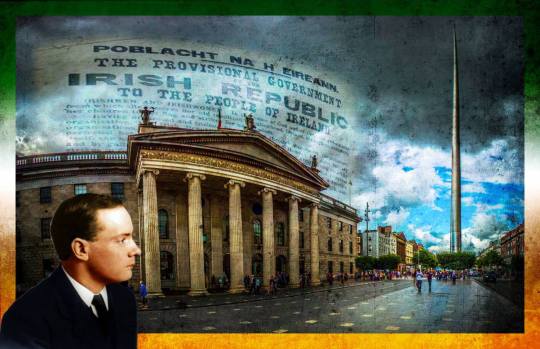
View On WordPress
#16th Irish Division#1916 Easter Rising#Battle of Hulluch#British Army#British Rule#Capel Street#Cathal Brugha#Day Four#Dublin#Eamonn Ceannt#Easter Rising#Germany#GPO#Home Rule#Ireland#Irish Volunteers#James Connolly#John Redmond#Mount Street bridge#O&039;Connell Street#Sackville Street#South Dublin Union#WWI
6 notes
·
View notes
Text
Ask an older generation of white South Africans when they first felt the bite of anti-apartheid sanctions, and some point to the moment in 1968 when their prime minister, BJ Vorster, banned a tour by the England cricket team because it included a mixed-race player, Basil D’Oliveira. After that, South Africa was excluded from international cricket until Nelson Mandela walked free from prison 22 years later. The D’Oliveira affair, as it became known, proved a watershed in drumming up popular support for the sporting boycott that eventually saw the country excluded from most international competition including rugby, the great passion of the white Afrikaners who were the base of the ruling Nationalist party and who bitterly resented being cast out. For others, the moment of reckoning came years later, in 1985 when foreign banks called in South Africa’s loans. It was a clear sign that the country’s economy was going to pay an ever higher price for apartheid. Neither of those events was decisive in bringing down South Africa’s regime. Far more credit lies with the black schoolchildren who took to the streets of Soweto in 1976 and kicked off years of unrest and civil disobedience that made the country increasingly ungovernable until changing global politics, and the collapse of communism, played its part. But the rise of the popular anti-apartheid boycott over nearly 30 years made its mark on South Africans who were increasingly confronted by a repudiation of their system. Ordinary Europeans pressured supermarkets to stop selling South African products. British students forced Barclays Bank to pull out of the apartheid state. The refusal of a Dublin shop worker to ring up a Cape grapefruit led to a strike and then a total ban on South African imports by the Irish government. By the mid-1980s, one in four Britons said they were boycotting South African goods – a testament to the reach of the anti-apartheid campaign. . . . The musicians union blocked South African artists from playing on the BBC, and the cultural boycott saw most performers refusing to play in the apartheid state, although some, including Elton John and Queen, infamously put on concerts at Sun City in the Bophuthatswana homeland. The US didn’t have the same sporting or cultural ties, and imported far fewer South African products, but the mobilisation against apartheid in universities, churches and through local coalitions in the 1980s was instrumental in forcing the hand of American politicians and big business in favour of financial sanctions and divestment. By the time President FW de Klerk was ready to release Mandela and negotiate an end to apartheid, a big selling point for part of the white population was an end to boycotts and isolation. Twenty-seven years after the end of white rule, some see the boycott campaign against South Africa as a guide to mobilising popular support against what is increasingly condemned as Israel’s own brand of apartheid.
. . . continues at the guardian (21 May, 2021)
#israel#palestine#gaza#south africa#i think all of us need to seriously study the history and actions of the anti-apartheid movement#and apply these lessons to the israeli occupation
3K notes
·
View notes
Text
by Akiva Van Koningsveld
Israeli Foreign Minister Gideon Sa’ar on Monday denounced Irish Prime Minister Simon Harris as an antisemite, speaking a day after Jerusalem announced the closure of its embassy due to Dublin’s hostile stances.
“Last night, the prime minister of Ireland, Simon Harris, the antisemite, said in an interview, ‘Ireland is not anti-Israel, but Ireland categorically opposes the starvation of children, and opposes categorically the killing of civilians,'” Sa’ar told reporters at a meeting of his New Hope Party.
“Israel starves children? When Jewish children died of hunger in the Holocaust, you were at best neutral in the war against Nazi Germany. Winston Churchill, during the war, in his speech on V-Day in Europe, noted how Ireland had carried on a love affair with Nazi Germany,” Jerusalem’s top diplomat said at the party faction meeting in the capital.
“And you call Israeli soldiers war criminals? You accuse the Jewish state, that was attacked on all fronts?” Sa’ar concluded while highlighting the Israel Defense Forces’ efforts to provide humanitarian aid to Gaza.
JNS reached out to the embassy of Ireland in Ramat Gan for comment.
On Sunday, Sa’ar ordered the closure of the embassy in Dublin. Israel’s envoy, Dana Erlich, had already been recalled to Jerusalem in May after Dublin became one of three European nations to recognize “Palestine.”
In announcing the embassy closing, Sa’ar cited Ireland’s “antisemitic actions and rhetoric,” charging that they were based on “delegitimization and demonization of the Jewish state and on double standards.”
Harris later condemned the “deeply regrettable” move in a post on X, saying he rejects the assertion that Dublin is anti-Israel. “Ireland is pro-peace, pro-human rights and pro-international law,” he claimed.
Ireland has for years criticized Israel and its policies in Judea, Samaria and Gaza, but the rhetoric has escalated since Jerusalem responded to the Hamas-led massacre on Oct. 7, 2023, that triggered a multi-front war.
The shuttering of the diplomatic mission was announced after the Irish government approved a proposal to intervene in South Africa’s genocide case against Israel at the International Court of Justice in The Hague.
Micheál Martin, Ireland’s deputy premier and minister for defense and foreign affairs, admitted that by seeking to intervene in the case, Dublin was essentially asking the top U.N. court to broaden its interpretation of “genocide” that falls within the framework of the Genocide Convention.
On Oct. 29, Harris called on the European Union to “review its trade relations” with the Jewish state, following what the Irish leader called a “shameful” vote by the Knesset on a law banning the activities in the country of UNRWA, the United Nations aid agency for Palestinians.
11 notes
·
View notes
Photo

On this day, 19 July 1984, the Dunnes Stores anti-apartheid strike began in Dublin, Ireland. Shop worker Mary Manning refused to check out a customer's South African fruit, as members of her union, Idatu, had voted to not handle South African goods. Manning was then suspended, and she and 11 of her colleagues went on strike in protest. The stoppage went on for three years, ending when the Irish government introduced a ban on South African products. More information, sources and map: https://stories.workingclasshistory.com/article/9108/dunnes-stores-strike On this day, 19 July 1984, the Dunnes Stores anti-apartheid strike began in Dublin, Ireland. Shop worker Mary Manning refused to check out a customer's South African fruit, as members of her union, Idatu, had voted to not handle South African goods. Manning was then suspended, and she and 11 of her colleagues went on strike in protest. The stoppage went on for three years, ending when the Irish government introduced a ban on South African products. More information, sources and map: https://stories.workingclasshistory.com/article/9108/dunnes-stores-strike https://www.facebook.com/photo.php?fbid=664217882418097&set=a.602588028581083&type=3
128 notes
·
View notes
Text




On 25th September 1923 40 men were killed when Redding Colliery, near Falkirk, was inundated by water from old workings.
The Redding disaster was one of the worst in the history of the Scottish coalfield and a devastating event in the life of a small local mining community. At 5.00am on Tuesday 25th September 1923 an inrush of water flooded much of No. 23 pit and by the time the rescue and recovery operation was completed in December the bodies of 40 men had been recovered. Redding No. 23 pit was operated by the Nimmo family of Westquarter House on a lease from the Duke of Hamilton. The main shaft was on the north bank of the Union Canal to the west of Redding village and the coal was being worked in a southerly direction towards a dyke of hard rock created by an ancient geological fault which separated No.23 from old abandoned coal workings. These were filled with water but it was believed that the dyke was thick enough to prevent any dangerous inrush. However it transpired that on the abandoned side of the dyke a sump, or chamber had been cut deep into the dyke making it significantly thinner at that point. This was opposite the Dublin section where coal was being stripped from the dyke. It was at this point that water entered and flooded the pit.
There were 66 men trapped in the pit at the time of the disaster and a huge rescue operation was mounted involving pit rescue teams from all over the Falkirk district and beyond. After 5 hours 21 men were rescued as they emerged through a old shaft to the south east called the Gutter Hole. As seen in the first pic, crowds of anxious relatives gathered near the pit head and teams of divers arrived to examine the flooded workings. On 4th October five men were recovered alive and well but they were the last.
It must have been awful for the 11 men who had survived for up to 14 days in a dry section of the pit which the rescuers had assumed was full of water. Several of the men had left messages for their families, at first full of optimism that rescue was near but later despairing of their own futures and those of their families. One reads:-
"25th - Tell my wife to keep up for the sake of her children, for I don't believe I will see her again. God bless you and help you, for my mind is made up I will never see you again. - Your loving husband, James Jarvie". Another two messages from Jarvie are undated, and say:- " My Dear Wife, - believe you think I am drowned. I am still living yet, and have great hopes of being saved. Keep your heart, Maggie and look after the weans, and my two boys in America." and "Dearest Maggie, - Convey the news to our two sons. Tell Peggie, James, Lilly, Jeannie, and wee Maisie to keep up. It is a sore blow to you Maggie. Good-bye."
Jarvie was regarded as having sacrificed his own life for those of his comrades. In the opinion of those who were rescued, he had ample time to get clear, but instead of making for the pit-bottom and safety, he elected to return and warn the ten others - beside whom he was found dead - of their danger.
The last body was recovered from the main part of the pit in early December, the fortieth man on the fortieth day of the rescue operation. Amazingly, work began again in Pit No.23 in January. There is a full account of the disaster here http://www.scottishmining.co.uk/240.html
The second pic shows the funeral procession in Falkirk High Street, a street I walk down several times a week. The other pics are of the memorial near Redding Cross with the names of the forty men who lost their lives, it has recently been refurbished.
11 notes
·
View notes
Text
Ireland’s relationship with Israel is simply incomprehensible.
While both Dublin and Jerusalem are democracies and share common historical experiences with British colonialism—the British Mandate in Palestine and the Irish struggle for independence—Ireland today is the most viciously anti-Israel and pro-Palestinian member of the European Union. Ireland leads the European nations in anti-Israel, pro-BDS campaigns.
Sinn Féin, the political arm of the former terrorist Provisional Irish Republican Army (IRA), is now Dublin’s leading political party. The IRA received training supported by the Soviet Union in Lebanon’s Bekaa Valley together with the Palestinian terrorists in the 1960s and 1970s. There exists a counterbalance to Dublin’s intensely pro-Palestinian sympathies; the Ulster Protestants in Northern Ireland, who are the most pro-Israel members of the British Parliament. Brian Kingston, a member of the Legislative Assembly of Northern Ireland and a Democratic Unionist Party (DUP) politician, remarked in a recent interview: “The unionist community in Northern Ireland has a long-standing affinity and affiliation to the cause of Israel.”
The IRA played a role during World War II in supporting German Nazis. Although the government of Ireland was officially neutral, the IRA collaborated with the Nazi military intelligence. Adolf Hitler sent money, transmitters and spies to Ireland. Moreover, the IRA provided the Nazis with targeting information on British installations in Belfast. After Hitler committed suicide in April 1945, Ireland’s wartime leaders—President Douglas Hyde and Prime Minister Éamon de Valera—offered official condolences to the Nazi envoy in Dublin.
More recently, the Hezbollah terror group’s unprovoked attacks on Israeli communities in northern Israel, which began on Oct. 8, 2023—one day after the Hamas terrorist attacks in southern Israel—did not stir Ireland’s peacekeepers in the U.N. Interim Force in Lebanon (UNIFIL) to try and stop the shelling attacks nor did they call to impose the U.N. Security Council Resolution 1701. Passage of that resolution came in the wake of the summer 2006 war between Hezbollah and Israel, and called for the disarmament of all armed groups in Lebanon—in particular, Hezbollah’s disarmament. Resolution 1701 established that no armed forces, other than UNIFIL and the Lebanese Armed Forces, could be south of the Litani River in Lebanon. Yet Hezbollah remained.
The Israel Defense Forces, in response to Hezbollah’s attacks during the last year, have moved from an aerial campaign to ground operations in Southern Lebanon to clear out Hezbollah forces. Israel has requested that the Irish contingent and all of UNIFIL move out of harm’s way. Ireland’s deputy premier and minister for defense and foreign affairs, Micheál Martin, responded by saying that he “strongly condemns” the IDF targeting and firing on the UNIFIL positions. Israel has repeatedly stated that it has no quarrel with the Lebanese people and certainly not with any of the UNIFIL peacekeepers.
This new dispute regarding the Irish peacekeepers comes after Ireland, Norway and Spain unilaterally recognized Palestinian statehood in May, essentially rewarding the Palestinians for the massacre of 1,200 Israelis by Hamas and the kidnapping of 250 others as hostages on Oct. 7, 2023.
The tensions aren’t just in the political arena. Members of an Irish women’s basketball team refused to shake hands with their Israeli counterparts during a pregame meeting in February’s FIBA EuroLeague Women’s tournament. The Israeli team ended up defeating the Irish team, 87-57. The behavior of the Irish national team was the same as the Islamic Republic of Iran’s team and teams from Israel’s Arab enemies in other tournaments.
Ireland was the first member of the European Economic Community (EEC)—the precursor of the European Union—to declare in 1980 their support for Palestinian statehood. Additionally, Ireland didn’t establish diplomatic relations with Israel until 1975 and first opened its embassy in Tel Aviv in 1996, long after other Western European nations.
When Israel retaliated against missile attacks launched from Gaza by Hamas and Palestinian Islamic Jihad in May 2021 during an 11-day conflict, the Irish government was the first E.U. state to condemn Israel, alleging the de facto “annexation of Palestinian land.” The issue propelling this condemnation was the decision by the Israeli Supreme Court affirming Jewish ownership of homes in the eastern Jerusalem neighborhood of Sheikh Jarrah. It was an example of brazen Irish interference in an Israeli legal matter that had nothing to do with annexation.
Ireland has transformed from being an intensely Catholic state to an equally intense secular one. While the young Irish have moved away from their church, they are eagerly accommodating Islamists who seek to undermine and destroy the Judeo-Christian way of life. Ultimately, they will learn that Islamists seek to destroy their Irish culture as well.
The Catholic Church in Ireland had an antisemitic past but with Ireland becoming increasingly secular, the antisemitism of today is no longer of the religious variety. It has the marking of a leftist, ideologically driven hatred dressed as anti-colonialism. Dublin has adopted the Palestinian narrative without questioning or searching for the truth. Arab-Islamic colonialism is rarely if ever discussed, and Palestinian terrorism is largely excused. The fact that the Palestinians have rejected every opportunity for self-determination and statehood does not bother the Irish government. What the Palestinians want is the disappearance of Israel and the Jews. It seems that Dublin is OK with that.
Relations between Ireland and Israel have been strained for years and with Sinn Féin growing power in Dublin, the relationship isn’t likely to improve and may only get worse.
2 notes
·
View notes
Text
Events 4.29
801 – An earthquake in the Central Apennines hits Rome and Spoleto, damaging the basilica of San Paolo Fuori le Mura. 1091 – Battle of Levounion: The Pechenegs are defeated by Byzantine Emperor Alexios I Komnenos. 1386 – Battle of the Vikhra River: The Principality of Smolensk is defeated by the Grand Duchy of Lithuania and becomes its vassal. 1429 – Joan of Arc arrives to relieve the Siege of Orléans. 1483 – Gran Canaria, the main island of the Canary Islands, is conquered by the Kingdom of Castile. 1521 – Swedish War of Liberation: Swedish troops defeat a Danish force in the Battle of Västerås. 1760 – French forces commence the siege of Quebec which is held by the British. 1770 – James Cook arrives in Australia at Botany Bay, which he names. 1781 – American Revolutionary War: British and French ships clash in the Battle of Fort Royal off the coast of Martinique. 1826 – The galaxy Centaurus A or NGC 5128 is discovered by James Dunlop. 1861 – Maryland in the American Civil War: Maryland's House of Delegates votes not to secede from the Union. 1862 – American Civil War: The Capture of New Orleans by Union forces under David Farragut. 1864 – Theta Xi fraternity is founded at Rensselaer Polytechnic Institute, the only fraternity to be founded during the American Civil War. 1903 – A landslide kills 70 people in Frank, in the District of Alberta, Canada. 1910 – The Parliament of the United Kingdom passes the People's Budget, the first budget in British history with the expressed intent of redistributing wealth among the British public. 1911 – Tsinghua University, one of mainland China's leading universities, is founded. 1916 – World War I: The UK's 6th Indian Division surrenders to Ottoman Forces at the Siege of Kut in one of the largest surrenders of British forces up to that point. 1916 – Easter Rising: After six days of fighting, Irish rebel leaders surrender to British forces in Dublin, bringing the Easter Rising to an end. 1944 – World War II: New Zealand-born SOE agent Nancy Wake, a leading figure in the French Resistance and the Gestapo's most wanted person, parachutes back into France to be a liaison between London and the local maquis group. 1945 – World War II: The Surrender of Caserta is signed by the commander of German forces in Italy. 1945 – World War II: Airdrops of food begin over German-occupied regions of the Netherlands. 1945 – World War II: HMS Goodall (K479) is torpedoed by U-286 outside the Kola Inlet, becoming the last Royal Navy ship to be sunk in the European theatre of World War II. 1945 – World War II: Adolf Hitler marries his longtime partner Eva Braun in a Berlin bunker and designates Admiral Karl Dönitz as his successor. 1945 – Dachau concentration camp is liberated by United States troops. 1945 – The Italian commune of Fornovo di Taro is liberated from German forces by Brazilian forces. 1946 – The International Military Tribunal for the Far East convenes and indicts former Prime Minister of Japan Hideki Tojo and 28 former Japanese leaders for war crimes. 1951 – Tibetan delegates arrive in Beijing and sign a Seventeen Point Agreement for Chinese sovereignty and Tibetan autonomy. 1952 – Pan Am Flight 202 crashes into the Amazon basin near Carolina, Maranhão, Brazil, killing 50 people. 1953 – The first U.S. experimental 3D television broadcast shows an episode of Space Patrol on Los Angeles ABC affiliate KECA-TV. 1965 – Pakistan's Space and Upper Atmosphere Research Commission (SUPARCO) successfully launches its seventh rocket in its Rehber series. 1967 – After refusing induction into the United States Army the previous day, Muhammad Ali is stripped of his boxing title. 1968 – The controversial musical Hair, a product of the hippie counter-culture and sexual revolution of the 1960s, opens at the Biltmore Theatre on Broadway, with some of its songs becoming anthems of the anti-Vietnam War movement. 1970 – Vietnam War: United States and South Vietnamese forces invade Cambodia to hunt Viet Cong. 1974 – Watergate scandal: United States President Richard Nixon announces the release of edited transcripts of White House tape recordings relating to the scandal. 1975 – Vietnam War: Operation Frequent Wind: The U.S. begins to evacuate U.S. citizens from Saigon before an expected North Vietnamese takeover. U.S. involvement in the war comes to an end. 1975 – Vietnam War: The North Vietnamese army completes its capture of all parts of South Vietnam-held Trường Sa Islands. 1986 – A fire at the Central library of the Los Angeles Public Library damages or destroys 400,000 books and other items. 1986 – The United States Navy aircraft carrier USS Enterprise becomes the first nuclear-powered aircraft carrier to transit the Suez Canal, navigating from the Red Sea to the Mediterranean Sea to relieve the USS Coral Sea. 1986 – Chernobyl disaster: American and European spy satellites capture the ruins of the No. 4 reactor at the Chernobyl Power Plant. 1991 – A cyclone strikes the Chittagong district of southeastern Bangladesh with winds of around 155 miles per hour (249 km/h), killing at least 138,000 people and leaving as many as ten million homeless. 1991 – The 7.0 Mw Racha earthquake affects Georgia with a maximum MSK intensity of IX (Destructive), killing 270 people. 1992 – Riots in Los Angeles, following the acquittal of police officers charged with excessive force in the beating of Rodney King. Over the next three days 63 people are killed and hundreds of buildings are destroyed. 1997 – The Chemical Weapons Convention of 1993 enters into force, outlawing the production, stockpiling and use of chemical weapons by its signatories. 2004 – The final Oldsmobile is built in Lansing, Michigan, ending 107 years of vehicle production. 2011 – The Wedding of Prince William and Catherine Middleton takes place at Westminster Abbey in London. 2013 – A powerful explosion occurs in an office building in Prague, believed to have been caused by natural gas, and injures 43 people. 2013 – National Airlines Flight 102, a Boeing 747-400 freighter aircraft, crashes during takeoff from Bagram Airfield in Parwan Province, Afghanistan, killing seven people. 2015 – A baseball game between the Baltimore Orioles and the Chicago White Sox sets the all-time low attendance mark for Major League Baseball. Zero fans were in attendance for the game, as the stadium was officially closed to the public due to the 2015 Baltimore protests.
1 note
·
View note
Text
Hello this is a great chance to talk about a story I love to tell: The Dunnes Stores Strikers.
I’m the 80’s Irish unions ( The IDATU ) voted to protest the apartheid regime in South Africa. Stores across the whole country were made aware that union workers wouldn’t be handling/selling any South African goods or produce. Most stores/management were okay with this and allowed its workers to implement the ban.
Except Dunnes store on Henry street Dublin.
Mary Manning, a young girl working at the till, followed her unions directive and refused to sell a South African Grapefruit. She was told by management to leave. Her floor supervisor, a woman named Karen Gearon, ordered a full walk out on the spot in solidarity.
The two of them aswell as other workers;
Liz Deasy, Michelle Gavin, Vonnie Munroe, Alma Russll, Sandra Griffin, Theresa Mooney, Cathryn O’Reilly and Tommy Davis. With Union representative Brendan Barron.
spent just over 2 years on strike, working against Dunnes and it’s selling of South African produce. They protested along side a refugee from the apartheid named Nimrod Sejake and for 2 years they spent every morning outside of Dunnes store, holding up the picket and encouraging people to boycott the store until they stopped selling the produce.
They were invited to go to South Africa by Desmond Tutu to see the situation with their own eyes, however the government treated them with extreme hostility and were forced to leave the country after being held within the airport with guns for hours.
They were so dedicated that Vonnie Monroe even chose to loose her house rather then break the picket like a judge had suggested.
Their strike lead to a nation wide ban and the creation of new laws. It contributed to the end of the regime, they were even recognised by Nelson Mandela who said “ordinary people far away from the crucible of apartheid cared for our freedom”.
There is even now a street in Johannasburg named after Mary manning and a Plaque on Henry Street seared by President Thabo Mbeki.
The Irish stand against apartheid and always will.



If you're going to do something similar you have to make sure the store knows you're targeting Israeli products specifically
#I was very very lucky to be in a production this year called Strike! based off of these agents#current events#the Dunnes strikes#palestine#ireland
43K notes
·
View notes
Text
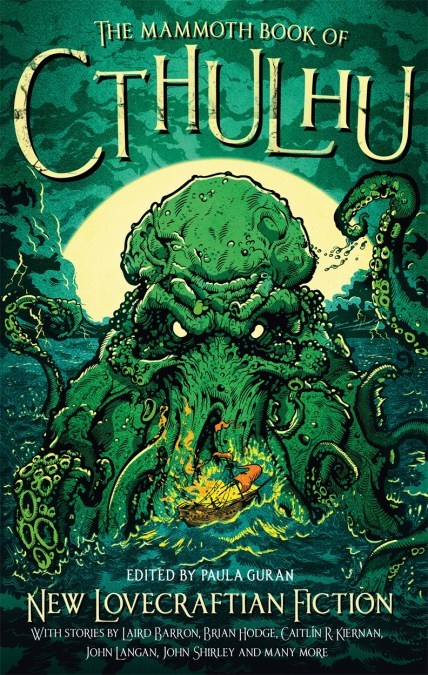
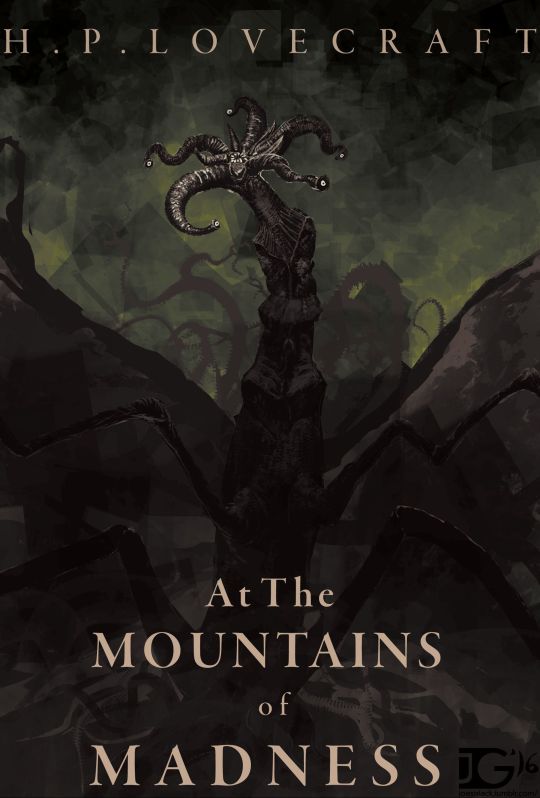
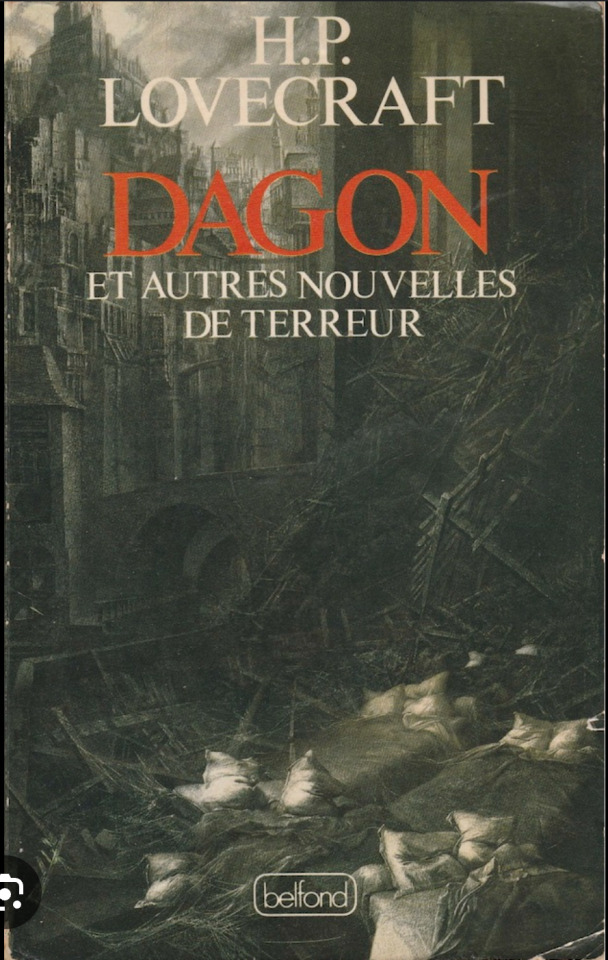
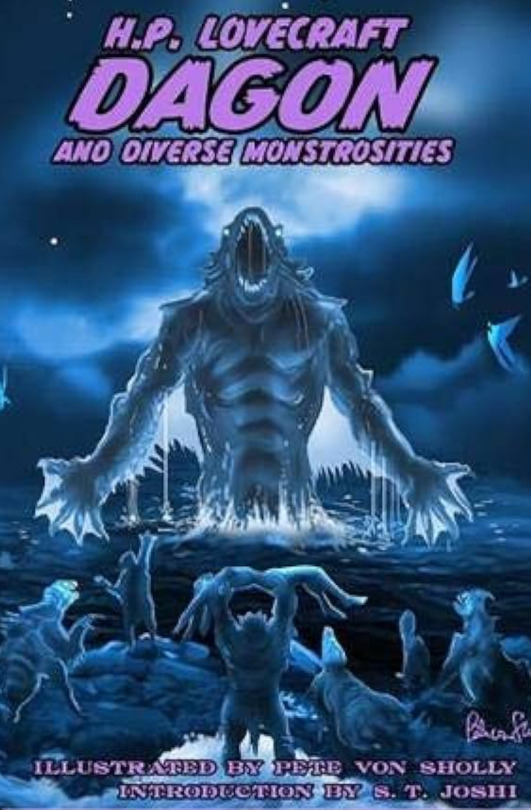
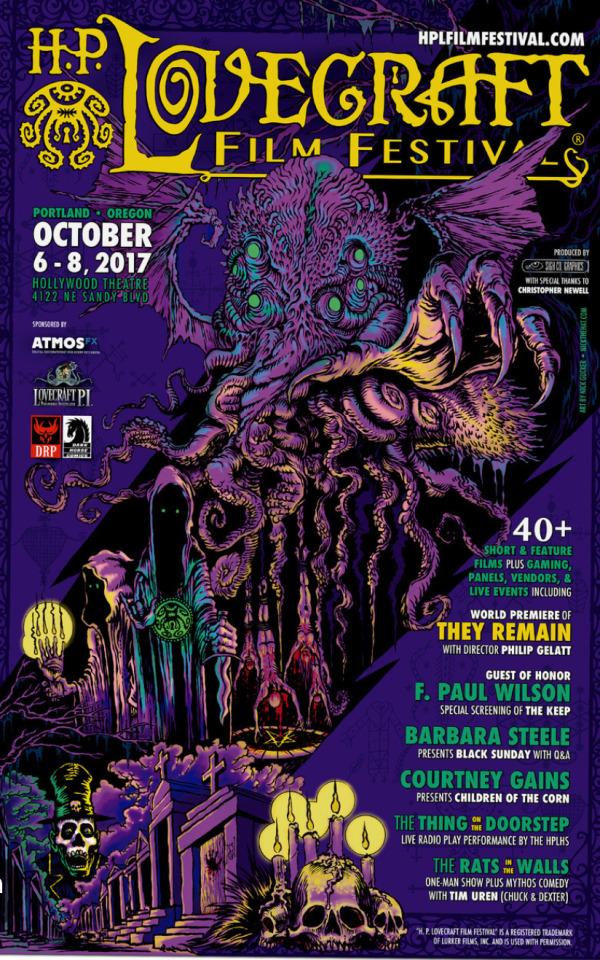
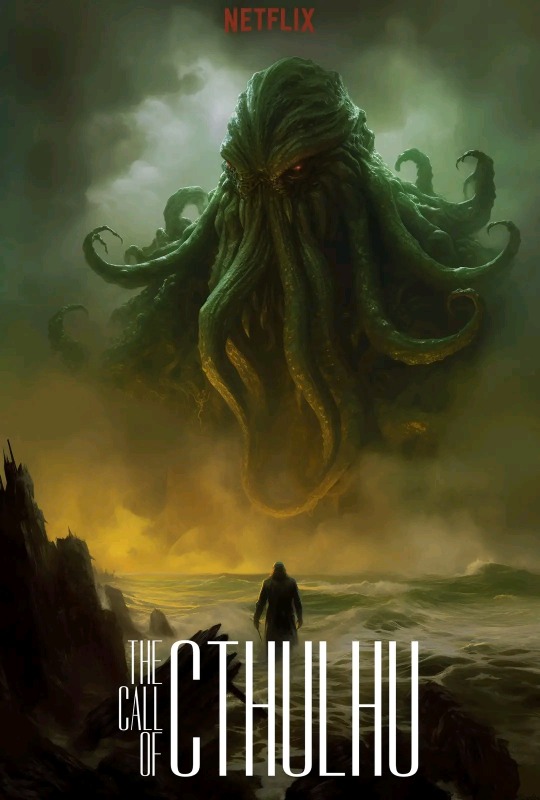
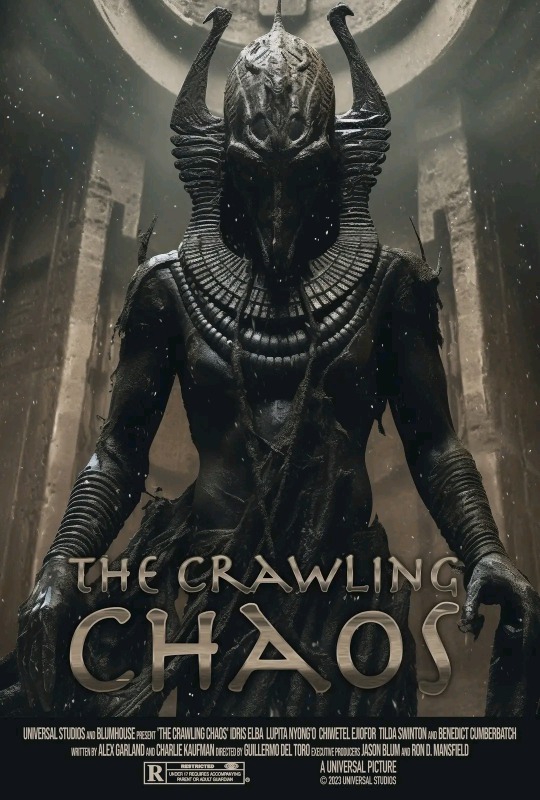
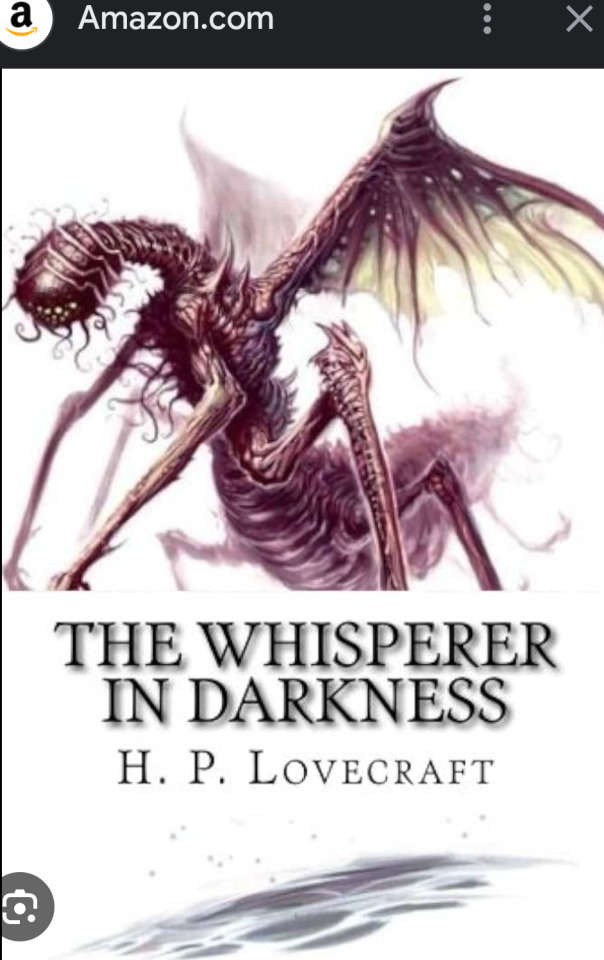
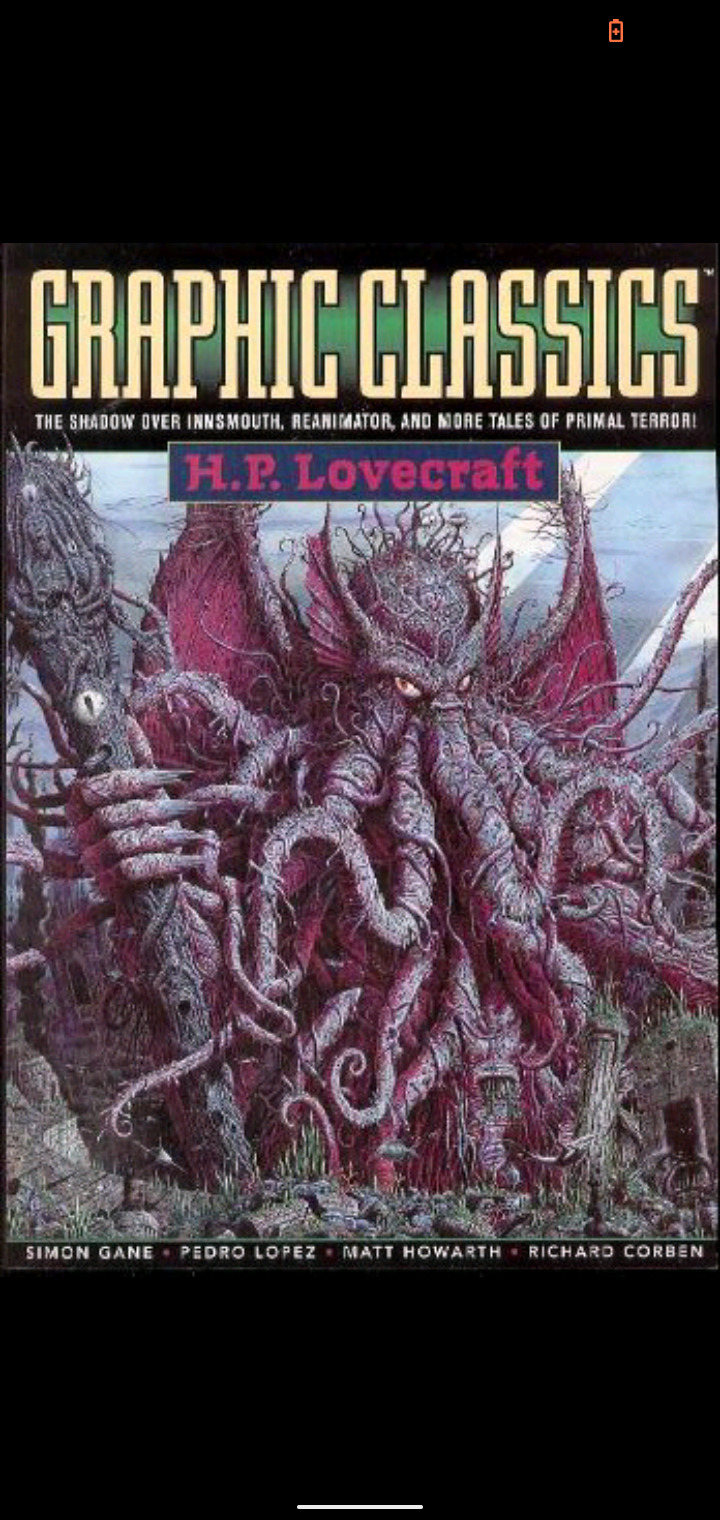
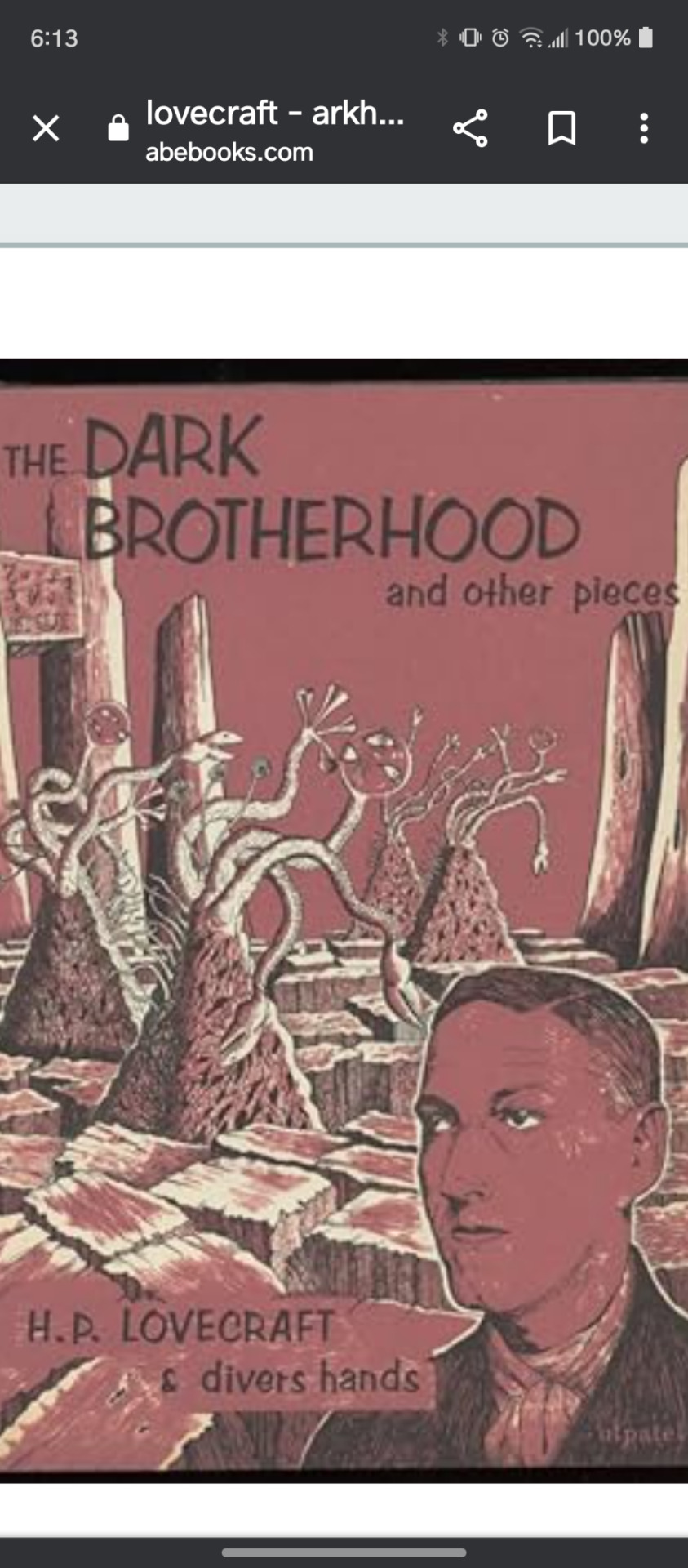
Pics:
1 thru 10. Old stories rendered into new tongues & clad in new arts.
Tales cast into different multi-media variations.
Joined by novel nightmares just set down into print.
All freely fed into the maelstrom of minds that make up new realities as a form of entertainment!
1914: Part 2, Notes.
1. Since I haven't found the full texts to these articles, I'll be using whatever commentary & quotations I stumble across.
2. I think most everybody is aware of Lovecraft's racist beliefs & his willful propaganda of such foul inequality.
3. Isaac Bickerstaffe was an Irish play & booklet¹⁰ writer.
Isaac was also a Lieutenant in the 5th Regiment of the British infantry. And, he served in the Marines during the 7 Years War.
Weird Shit: Bickerstaffe hurt the production of his own 1st play!
Isaac stupidly criticized David Garrick (The top actor-manager of that time!)- for the 'barbarity' of setting Shakespeare's plays to music...
Bickerstaffe's light opera, "Thomas & Sally," was a huge hit - playing around the British Empire!!
From then on, Isaac's comedic works were also successful. He even wrote the 1st English comic opera, "Love in a Village."
More Weird Bits:
3A. A newspaper falsely stated that Bickerstaffe had committed suicide - by drowning himself in the south of France!
3B. Suspected of homosexuality, Isaac fled to mainland Europe.
There, he lived in poverty & misery.
3C. Then, another false news report claimed that Bickerstaffe had died in Sussex, England.
Yet, he actually disappeared around 1808...
3D. After this disappearance, his 'colleague' (Charles Dibdin) was long accused of selling Isaac's songs - as if they were Dibdin's own work...
4. Howard's love of astronomy started when he was 12 years old.
That was when HPL first found his grandma's books on astronomy in the family's attic library.
Soon afterwards, Sarah (Lovecraft's mom) bought him a small mail-order Excelsior spyglass - for 99¢!!
5. Nostradamus was a French astrologer, pharmacist, physician, writer, translator & 'seer.'
He's best known for his book, "The Prophecies," a poetic work that supposedly predicts the future...
Strangely enough, there's several predictions that seem close to actual events.
Yet, you never hear about the totally wrong predictions.
For example, a shooting war (between Russia & the U.S.) was supposed to have started - in the year 2000 AD...
You don't always get what you pay for!
6. Queen Anne of Great Britain was plagued with ailing health all of her life.
She endured 17 pregnancies & yet, outlived all of her children!!
In doing so, she became the last of the Stuart line of succession.
Painfully shy, Anne learned to assert her authority when it was needed!
It was she who oversaw the union of England & Scotland.
7. Johnathan Swift was an Anglo-Irish author, poet, essayist, satirist, political pamphlet maker & the Anglican Dean of St. Patrick's Cathedral in Dublin, Ireland.
He's best remembered for writing the satiric "Gulliver's Travels."
One of his many pen names was Isaac Bickerstaffe!
But, Swift (a Tory) was permanently exiled ("like a rat in a hole") when the Whigs returned to power - right after Queen Anne's death.
Weird Stuff: Swift wrote his own obituary, a year after 1st showing signs of dementia.
Guardians were appointed due to Swift's violent outbursts - with old friends.
Swift, in great pain, tried to rip out his own inflamed left eye!!
Then, Swift spent a whole year with- out saying a word.
But, thankfully, he finally died.
Following his best friend to the grave - a year late.
8. John Partridge published a popular almanac of astrological predictions.
But, Partridge falsely claimed to know the death dates of various church officials!
Swift, using the pen name of Isaac Bickerstaffe, predicted Partridge's death - in late March of that same year (1708)!!
Then, Swift issued a pamphlet stating that Partridge was indeed dead - contrary to Partridge's own rebuttal!
9. Though the planet Venus is usually thought of as Earth's twin - it's actually more like a complete opposite!!
Venus spins backwards, has a day longer than its own year & lacks any seasons!
It's thought to have once being habitable - about a billion years ago!!
10. Librettos (little booklets) are used to mark detailed scene descriptions in operas, ballets or other musicals.
Next: Part 3, Quotations.
0 notes
Text
#OTD in 1916 – Easter Rising | Margaret Keogh was shot and killed by British soldiers while rushing to attend to patients and the wounded at the South Dublin Union (now the site of St James’s Hospital).
Among the first victims of the Easter Rising was a nurse rushing to attend to patients and the wounded. Margaret Keogh (Kehoe), from Leighlinbridge, Co Carlow. Margaret was working as a nurse in the South Dublin Union (now the site of St James’s Hospital). Six republican riflemen, who had been firing from a top floor on the British soldiers, vacated their position and there was a lull in the…
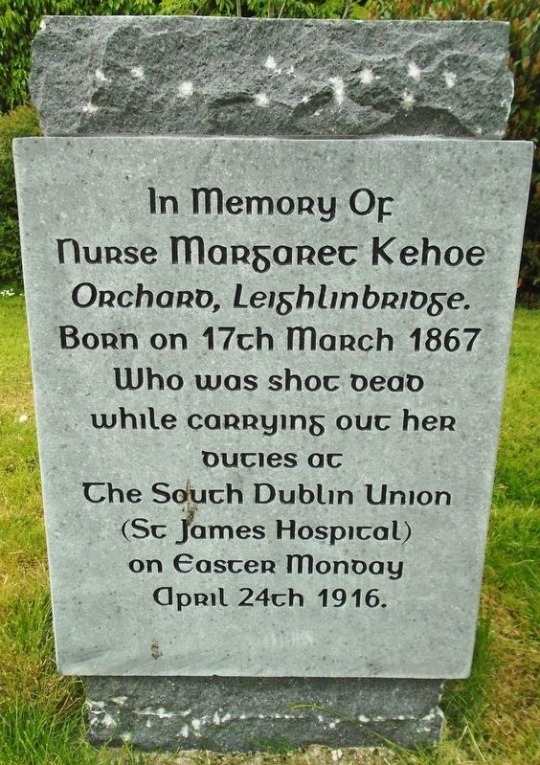
View On WordPress
#1916 Easter Rising#Co Carlow#Dublin South Union#Eamonn Ceannt#Irish Volunteer Dan McCarthy#Kehoe#Leighlinbridge#Lt Captain Myles Keogh#Margaret Keogh#Nurse Margaret Keogh
15 notes
·
View notes
Text
GAINESVILLE GA - WAREHOUSE FLOOR MARKING | LINE STRIPING

GAINESVILLE GA - WAREHOUSE FLOOR MARKING | LINE STRIPING Additional GA cities that we serve: Atlanta, Augusta, Richmond, Columbus, Macon, Savannah, Athens, Sandy Springs, South Fulton, Roswell, Johns Creek, Warner Robins, Albany, Alpharetta, Marietta, Smyrna, Valdosta, Brookhaven, Stonecrest, Dunwoody, Peachtree Corners, Gainesville, Newman, Mableton, Milton, Rome, Tucker, Peachtree City, Martinez, East Point, Evans, Kennesaw, Douglasville, Dalton, Hinesville, Woodstock, Statesboro, Redan, Lawrenceville, Canton, Chamblee, LaGrange, Stockbridge, Duluth, Carrollton, McDonough, Decatur, Pooler, Sugar Hill, Candler-McAfee, Ackworth, Griffin, Union City, Cartersville, Suwannee, Snellville, Forest Park, Milledgeville, St Marys, Thomasville, Fayetteville, Kingsland, Winder, Perry, North Decatur, North Druid Hills, Calhoun, Lithia Springs, Tifton, Fairburn, Norcross, Brunswick, Villa Rica, Dublin, Powder Springs, Riverdale, Belvedere Read the full article
0 notes
Text
Clodagh Emoe Biography
Central to my art practice is a concern with the encounter as a condition of art and how it manifests through perception. My most recent works are best described as events as they are predicated on a gathering and call people together to specific locations at specific times, for example, a forest at midnight, a flat due for demolition in Dublin’s city centre at dusk and the National Gallery of Ireland during closing hours. These events engage with the condition of art as an encounter by exploring how thinking may be ‘felt’.
Recent commissioned works include: Psychic Sleep and Collective Thought (2012/13) as part of the Maybe Education programme at dOCUMENTA XIII, Dublin City Gallery The Hugh Lane and at Catalyst Arts, Belfast; Metaphysical Longings, an on-going exploration of thought using forms of guided visualization known as psychic sleep; The Closing of Mystical Anarchism, Dublin City Gallery The Hugh Lane, Dublin (2012); Parodos, Irish Museum of Modern Art (2012); The Unveiling, (2010), a site-specific work parodying the failed unveiling of a monumental sculpture for Dublin City Council and Cult of Engagement, Project Arts Centre, Dublin (2009) commissioned by Project Arts Centre.
Artworks are included in the permanent collection of the Irish Museum of Modern Art, Limerick City Gallery of Art, The University of the Arts, London and the private collections of Anthony Reynolds and Kilfane Sculpture Garden. Projects have been supported by the Arts Council of Ireland, Culture Ireland, European Cultural Union, South Dublin County Council, Dublin City Council, PRTLI (IR) and ARHB, (UK). I have also been awarded residencies at Banff, Canada, The Tyrone Guthrie Centre, Virginia, US, IMMA, Sím, Reykjavik and the National Art Studios, The National Museum of Contemporary Art, Korea.
I hold a BA in Fine Art from the National College of Art and Design, Dublin, a MA in Fine Art from Chelsea College of Art and Design, London, and a PhD titled Exploring the Philosophical Character of Contemporary Art through a Post-Conceptual Practice from GradCAM/DIT.
Fig1. Clodagh Emoe 'Reflections on a Radical Plot', 2022, 10 x companion prints, ecological prints produced by the plants natural dye transferred onto cotton paper, each print 24 x 16 cm
Fig2. Clodagh Emoe 'Reflections on a Radical Plot', 2022, still from film showing archive of prints on wall and detail of Primrose companion print, 16 x 24 cm


1 note
·
View note
Text
Limerick club and school rugby fixtures - November 1 to November 8
New Post has been published on https://thedailyrugby.com/limerick-club-and-school-rugby-fixtures-november-1-to-november-8/
The Daily Rugby
https://thedailyrugby.com/limerick-club-and-school-rugby-fixtures-november-1-to-november-8/
Limerick club and school rugby fixtures - November 1 to November 8
LIMERICK club and school rugby fixtures for the period from Wednesday, November 1 to Wednesday, November 8 . Kick-off 2.30pm unless otherwise stated.
Saturday, November 4
Energia All Ireland League Division 1A:Ballynahinch v Shannon,Ballymacarn Park;
City of Armagh v Dublin University,Palace Grounds;
Cork Constitution v Lansdowne,Temple Hill;
U.C.D. v Terenure College,Belfield;
Young Munster v Clontarf,Tom Clifford Park;
Division 1B:Blackrock College v Queens University,Stradbrook;
Buccaneers v Old Belvedere,Dubarry Park;
Garryowen v Old Wesley,Dooradoyle;
Naas v St. Mary’s College,Forenaughts;
U.C.C. v Highfield,Mardyke;
Division 2A:Cashel v Ballymena,Spafield;
M.U. Barnhall v Malone,Parsonstown;
Navan v Banbridge,Balreak Old;
Old Crescent v Nenagh Ormond,Takumi Park;
U.L. Bohemian v Greystones,Annacotty;
Division 2B:Belfast Harlequins v Skerries,Deramore Park;
Instonians v Sligo,Shaw’s Bridge;
Malahide v Rainey Old Boys,Estuary Road;
Wanderers v Dungannon,Merrion Road;
Division 2C:Ballina v Tullamore,Heffernan Park;
Bangor v Enniscorthy,Upritchard Park;
Clogher Valley v Clonmel,The Cran;
Galwegians v Bruff,Crowley Park;
Omagh Academicals v Midleton,Thomas Mellon Playing Fields;
Energia Women’s All Ireland League:Ballincollig v U.L. Bohemian,Tanner Park,5pm;
Old Belvedere v Cooke,Ollie Campbell Park,5pm;
Suttonians v Blackrock College,JJ McDowell Memorial Grounds,5pm;
Wicklow v Railway Union,Ashtown Lane,5pm;
Munster Junior League Division 3:Castleisland v Ardscoil Old Boys,Castleisland;
North Munster Gleeson League A:Presentation v St. Senan’s,Rathuard;
Richmond v St. Mary’s,Garryowen Green;
Shannon v Kilrush,Coonagh;
North Munster Gleeson League B:Garryowen v Thomond,Dooradoyle;
Listowel v Old Crescent,Listowel;
Newcastle West v Charleville,Newcastle West;
North Munster Gleeson League C:Kilfeacle v Thurles,Kilfeacle;
Donal Walsh U20 Trophy:Garryowen v Bruff,Crescent Comp;
U.C.C. v Old Crescent,Curaheen Road;
Bank of Ireland Boys U18 League Conference 2:Killorglin-Iveragh Eagles v Charleville,Killorglin,12.30pm;
Tralee-Castleisland v Killarney,Tralee,12.30pm;
Conference 4:Bantry Bay v Clonakilty,Bantry,12.30pm;
Kinsale v Bandon,Kinsale,12pm;
Conference 5:Carrigaline-Dolphin v Douglas-Muskerry,Tramore Valley Park,12pm;
Conference 6:Waterpark v Dungarvan,Ballinakill,12pm;
Conference 7:Cobh Pirates v Mitchelstown,Cobh,1pm;
Midleton v Fermoy,Towns Park,1pm;
Bank of Ireland Boys U16 League Conference 2:Listowel v Killarney,Listowel,12pm;
Chorca Dhuibhne v Desmond Rugby,Ballydavid,12pm;
Conference 4:Bandon v Kinsale,Bandon,12pm;
Clonakilty Red v Bantry Bay,The Vale,2pm;
Conference 5:Fermoy v Douglas-Muskerry,Fermoy,2pm;
Highfield v Ballincollig,Woodleigh Park,12.30pm;
Conference 6:Waterpark v Waterford City,Ballinakill,12pm;
Boys East U14 League Group 2:Clanwilliam v Clonmel,Clanwilliam Park,4.30pm;
Boys South U14 League Group A:Clonakilty v Bandon,The Vale,11am;
Dunmanway v Skibbereen,Dunmanway,12pm;
Group B:Mallow v Cork Constitution,Mallow,12pm;
Group C:Midleton v Crosshaven,Towns Park,12pm;
Group D:Mitchelstown v Highfield,Mitchelstown,12pm;
Old Christians v Muskerry,Rathcooney,12.15pm;
Boys South U13 League Group B:Cork Constitution v Skibbereen,Temple Hill,12pm;
Boys West U14 League:Charleville v Killarney,Charleville,12pm;
Chorca Dhuibhne v Listowel,Ballydavid,12pm;
Iveragh Eagles v Castleisland-Abbeyfeale,Cahirciveen,12pm;
Killorglin v Tralee,Killorglin,12pm;
Bank of Ireland Girls U18 League Conference 1:Ballina-Killaloe v Carrick-on-Suir,Clairsford,12.30pm;
Bruff v Fethard-Thurles,Kilballyowen Park,12.30pm;
Ennis v Shannon,Ennis,12.30pm;
Conference 2:Ballincollig v Midleton-Youghal-Fermoy,Tanner Park,12.30pm;
Clonakilty v Dolphin,The Vale,12.30pm;
Dunmanway-Bantry Bay v Killarney,Bantry,11am;
Bank of Ireland Girls U16 League Conference 1:Bruff v U.L. Bohemian-Garryowen,Killballyowen Park,11am;
Conference 2:Clonakilty v Tralee-Castleisland,The Vale,12.30pm;
Conference 3:Old Crescent v Bruff,Takumi Park,11am;
Boys U18 Friendly:Old Christians v Skibbereen,Rathcooney,12.30pm;
Boys U16 Friendly:Old Christians v Clonakilty Green,Rathcooney,1.15pm;
Boys U13 Friendly:Cobh Pirates v Bandon,Cobh,1pm;
Girls U16 Friendly:Ennis v Ballinasloe,Ennis,11am;
Sunday, November 5
Munster Junior League Division 1:Clanwilliam v Kilfeacle,Clanwilliam Park;
Kanturk v Charleville,Kanturk;
Mallow v Clonakilty,Mallow;
Newcastle West v Thurles,Newcaslte West;
Richmond v Skibbereen,Richmond Park;
Sunday’s Well v Bandon,Musgrave Park;
Thomond v Muskerry,Liam Fitzgerald Park;
Division 2:Abbeyfeale v Cobh Pirates,Abbeyfeale;
Ballincollig v Tralee,Tanner Park;
Fermoy v Crosshaven,Fermoy;
Galbally-Mitchelstown v Fethard,Galbally;
Kinsale v Old Christians,Kinslae;
St. Mary’s v Youghal,Grove Island;
Waterpark v St. Senan’s,Ballinakill;
Division 3:Chorca Dhuibhne v Ennis,Ballydavid;
Douglas v Killarney,Castletreasure;
Dungarvan v Carrick-on-Suir,Dungarvan;
Scariff v Killorglin,Scariff;
Senior Clubs League Division 1:Shannon v Garryowen,Coonagh;
Young Munster v Cashel,Tom Clifford Park;
Division 2:Nenagh Ormond v Old Crescent,Nenagh;
Women’s League Division 1:Skibbereen v Dolphin,Skibbereen,1pm;
Tralee v Ennis-Kilrush,Tralee,1pm;
U.L. Bohemian v Shannon-TUS,Annacotty,1pm;
Division 2:Ballincollig v Clonakilty,Tanner Park,1pm;
Bantry Bay v Bruff,Bantry,1pm;
Midleton v Thurles,Towns Park,1pm;
Bank of Ireland Boys U18 League Conference 1:Garryowen v Bruff Yellow,Dooradoyle,12pm;
Shannon v Kilrush,Coonagh,12pm;
Young Munster v Newport-Old Crescent-St Senan’s,Derryknockane,12pm;
Conference 2:Chorca Dhuibhne v Desmond Rugby,Ballydavid,2pm;
Conference 3:Nenagh Ormond v Thurles,Nenagh,12pm;
Thurles v Ennis Black,Thurles,12pm;
Conference 6:Clonmel v Youghal,Clonmel,12pm;
Bank of Ireland Boys U16 League Conference 1:Young Munster v Garryowen,Dooradoyle,12pm;
Conference 2:Killorglin v Castleisland,Killorglin,12pm;
Conference 3:Cashel v Kilfeacle,Cashel,11am;
Nenagh Ormond v Thurles,Nenagh,12pm;
Conference 6:Clonmel v Carrick-on-Suir,Clonmel,1.30pm;
Conference 7:Midleton v Mitchelstown,Towns Park,12pm;
Conference 8:Old Crescent v Newport,Takumi Park,12pm;
Charleville v Bruff,Charleville,12pm;
UL Bohemian v Kanturk,Annacotty,12pm;
Conference 15:Newcastle West White v Dunmanway,Newcastle West,12pm;
Waterpark White v Ballina-Killaloe White,Ballinakill,12pm;
Boys East U14 League Group 1:Carrick-on-Suir v Kilfeacle, Carrick-on-Suir,11am;
Cashel v Dungarvan,Cashel,1pm;
Group 2:Waterford City v Thurles,Waterford,11am;
North U14 League Group 1:Newcastle West v Nenagh Ormond,Newcastle West,11am;
Young Munster v Thomond-Richmond,Derryknockane,11am;
Group 2:Bruff v Kilrush,Kilballyowen Park,11am;
Ennis Black v Shannon,Ennis,11am;
U.L. Bohemian v Ballina-Killaloe-Scariff-Newport,Annacotty,11am;
Boys South U14 League Group C:Kinsale v Cobh Pirates,Kinsale,10.30am;
Bank of Ireland Girls U14 League Conference 2:Ballincollig v Cobh Pirates,Tanner Park,12pm;
Dolphin-Old Christians v Dungannon,Musgrave Park,2pm;
Conference 3:Mallow-Mitchelstown v Dunmanway-Bantry Bay,Mallow,12pm;
Boys U13 Friendly:Old Christians v Cashel,Rathcooney,11am;
Tuesday, November 7
Boys Schools King Cup:Abbey CBS v Newport College,Collegelands,12.30pm;
Boys Schools McCarthy Cup B – Pathway 2:High School CBS v Kinsale CS,Clonmel,12.30pm;
Wednesday, November 8
Donal Walsh U20 Trophy:U.L. Bohemian v Dolphin, Annacotty,8pm;
Boys Schools Pinergy Munster Senior Cup Group A:P.B.C. v Munster CSP,Musgrave Park,8pm;
St. Munchin’s v Castletroy College,Corbally;
Group B:Ardscoil Rís v Glenstal Abbey School,Liam Fitzgerald Park;
C.B.C. v Bandon Grammar School,Lansdowne;
Boys Schools O’Brien Cup:Colaiste Muire (Cobh) v Newtown School,Cobh,12pm;
Boys Schools Bowen Shield:Rockwell College v Crescent College Comp.,Rockwell;
Boys Schools Munster Junior Cup Group A:Crescent College Comp. v Bandon Grammar School,Crescent Comp.;
Munster CSP v P.B.C.,Musgrave Park,6.30pm;
Group B:Castletroy College v C.B.C., Castletroy;
Glenstal Abbey School v Rockwell College,Glenstal;
Boys Schools McCarthy Cup A:Ardscoil Rís v St. Munchin’s,Coonagh;
P.B.C. v C.B.C.,Wilton;
Boys Schools McCarthy Cup B:Ardscoil Rís v St. Munchin’s,Coonagh;
P.B.C. v C.B.C.,Wilton;
Boys South U14 League Group D:Muskerry v Dolphin,Ballyanly,7pm;
Boys Schools U15 Friendly:P.B.C. v C.B.C.,Wilton;
Boys Schools U14 Friendly:Bandon Grammar School v P.B.C.,Bandon;
Bandon Grammar School B v P.B.C. B,Bandon;
Clongowes Wood College v St. Munchin’s,Clane;
Clongowes Wood College B v St. Munchin’s B,Clane;
Clongowes Wood College C v St. Munchin’s C,Clane;
0 notes
Text
[ID: Excerpts from an article from the Dublin People media group titled, "Ó Ríordáin says Ireland 'can’t go on with Eurovision' due to Israeli involvement". The first image shows a photo attached to the article where Labour TD Aodhán Ó Ríordáin is making an announcement at a podium of three microphones, calling for the RTÉ to pull out of next year's Eurovision contest. The article was written by Mike Finnerty and published on 19 Dec 2023. The article reads,
"Speaking to Newstalk, the Dublin Bay North TD said that by virtue of Ireland being the most successful nation in Eurovision history, Ireland choosing to withdraw 'would encourage others to follow the same route,' he said.
'If the Eurovision doesn’t happen because of Israel’s participation then so be it.'
'I think in years to come when the history of this conflict is being written, we want a little asterisk beside our name as a country that was different.'
The European Broadcasting Union’s decision to allow Israel to participate in next year’s contest has drawn a mixed reaction.
The Association of Composers and Lyricists of Iceland (FTT), which represents Icelandic artists, has called on Iceland’s national broadcaster RUV to halt its participation in the show should Israel remain in the competition.
The 2019 edition of the contest, hosted in Israel following their victory the previous year, was greeted with boycotts...
...Last week, The Journal reported that RTÉ has received 500 emails from members of the public encouraging RTÉ to withdraw Ireland from the contest.
The petition notes that Russia was banned from the competition in 2022 following their invasion of Ukraine, and the same principle should apply to Israel in light of their war against Gaza.
The email reads 'it appears that Israel’s participation is part of a concerted public relations effort by the Israeli government to portray itself to the global community as a modern, liberal, forward-thinking state, despite the years of occupation and violence against Palestine.'
The petition describes Ireland as a 'vital part of the heartbeat and history of the competition' and said that it is 'essential that we use our voice now to condemn the actions of the Israeli government'.
Israel’s participation next year has irked Ó Ríordáin, who said 'you have a situation with the Eurovision contest where Israel will be invited in to wave their flags in a joyful way on that huge platform.'
'I think we have to reconsider whether a big player in Eurovision history such as Ireland wants to be involved.'
'If we don’t want to be involved and it doesn’t sit easily with our sense of the world, we should just withdraw and tell everyone why we’re doing it.'
He compared the current pressure on Israel to the pressure placed on South Africa towards the end of the Apartheid era, and that a concentrated international effort helped bring an end to the regime there.
'I think we have more stature on the international stage than people give credit for us here,' he said.
'I think at the very least, we will have shown that all of Israel’s interactions on the international stage are now being sullied and tarnished by their involvement.
'We should make this stand and express our upset with Israel’s involvement.'
End ID.]

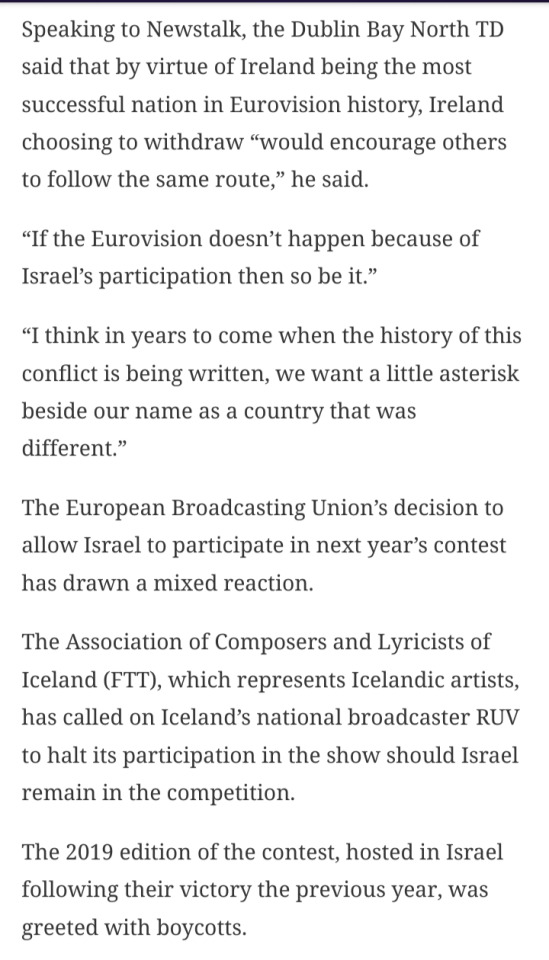


Source: https://dublinpeople.com/news/dublin/articles/2023/12/19/aodhan-o-riordain-eurovision-24/
175 notes
·
View notes
Text




On 25th September 1923 40 men were killed when Redding Colliery, near Falkirk, was inundated by water from old workings.
The Redding disaster was one of the worst in the history of the Scottish coalfield and a devastating event in the life of a small local mining community. At 5.00am on Tuesday 25th September 1923 an inrush of water flooded much of No. 23 pit and by the time the rescue and recovery operation was completed in December the bodies of 40 men had been recovered. Redding No. 23 pit was operated by the Nimmo family of Westquarter House on a lease from the Duke of Hamilton. The main shaft was on the north bank of the Union Canal to the west of Redding village and the coal was being worked in a southerly direction towards a dyke of hard rock created by an ancient geological fault which separated No.23 from old abandoned coal workings. These were filled with water but it was believed that the dyke was thick enough to prevent any dangerous inrush. However it transpired that on the abandoned side of the dyke a sump, or chamber had been cut deep into the dyke making it significantly thinner at that point. This was opposite the Dublin section where coal was being stripped from the dyke. It was at this point that water entered and flooded the pit.
There were 66 men trapped in the pit at the time of the disaster and a huge rescue operation was mounted involving pit rescue teams from all over the Falkirk district and beyond. After 5 hours 21 men were rescued as they emerged through a old shaft to the south east called the Gutter Hole. As seen in the first pic, crowds of anxious relatives gathered near the pit head and teams of divers arrived to examine the flooded workings. On 4th October five men were recovered alive and well but they were the last.
It must have been awful for the 11 men who had survived for up to 14 days in a dry section of the pit which the rescuers had assumed was full of water. Several of the men had left messages for their families, at first full of optimism that rescue was near but later despairing of their own futures and those of their families. One reads:-
"25th - Tell my wife to keep up for the sake of her children, for I don't believe I will see her again. God bless you and help you, for my mind is made up I will never see you again. - Your loving husband, James Jarvie". Another two messages from Jarvie are undated, and say:- " My Dear Wife, - believe you think I am drowned. I am still living yet, and have great hopes of being saved. Keep your heart, Maggie and look after the weans, and my two boys in America." and "Dearest Maggie, - Convey the news to our two sons. Tell Peggie, James, Lilly, Jeannie, and wee Maisie to keep up. It is a sore blow to you Maggie. Good-bye."
Jarvie was regarded as having sacrificed his own life for those of his comrades. In the opinion of those who were rescued, he had ample time to get clear, but instead of making for the pit-bottom and safety, he elected to return and warn the ten others - beside whom he was found dead - of their danger.
The last body was recovered from the main part of the pit in early December, the fortieth man on the fortieth day of the rescue operation. Amazingly, work began again in Pit No.23 in January. There is a full account of the disaster here http://www.scottishmining.co.uk/240.html
18 notes
·
View notes
Text
Do I Remember the Second Time?

Most people think about the first time they saw Pulp live when they sing "Do you remember the first time?" Mine was 1994 and it was in the SFX in Dublin, 5 days before Common People was released. I was a mis-shaped, misfit, and the gig changed my life. Where I went to school, everyone wore Global Technicolour t-shirts and chewed the insides of their mouth. They weren't actually on ecstacy, it seemed to be a cool thing to do. I left my classmates to their raves and went to watch bands like Fluffy and the Bluetones. But it wasn't until Pulp's SFX gig, where I felt home with 800 other indie kids.
I watched them a couple of years later in the Point and there were many many more kindred spirits in the crowd by then. I've seen them a few times when they've come to Ireland (though I skipped the post-This is Hardcore gigs, to my regret.)
However, "Do you remember the first time?" took on a different meaning this year. Ten years after their last gig, after which I didn't sleep for three days (due to non-chemically induced ecstacy) they were back, for their This is What We Do for an Encore tour. Rozz and I booked into a hotel in Dublin, had a drink, and we were ready for action! Long story short, Rozz and I aren't drinkers, and we had forgotten the adage of never mixing grape with grain. There is video evidence of us having the greatest night of our lives. The next morning, I logged on to Ticketmaster to see if I could find any way to see them again so I wouldn't live in eternal regret.
All the dedicated Pulp gigs had long sold out so I found myself paying way over the odds to see them at TRNSMT, an annual festival in Glasgow.

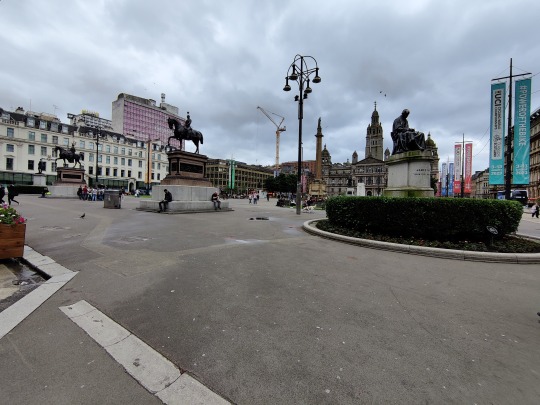
Glasgow is a cool city, famous for this statue and this square with loads of statues, ☝🏼 but that was not important. I had this 👇🏼
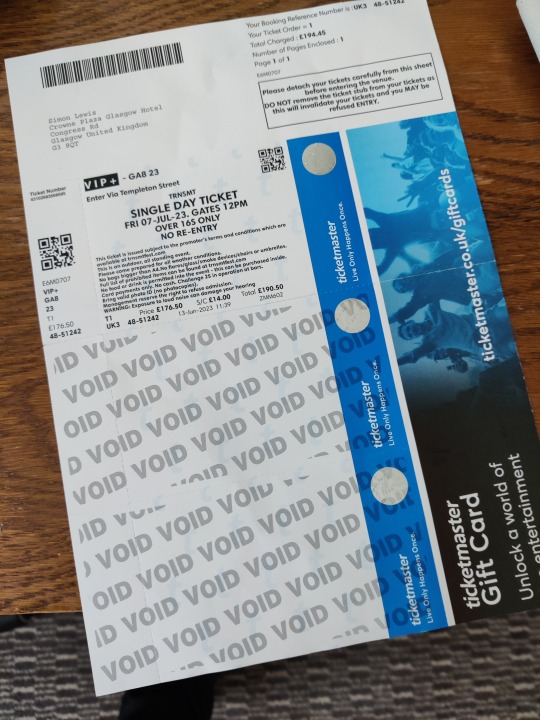
I stayed in the Crown Plaza hotel and checked in. I'm almost certain they had no idea what they were doing when they were allocating my room but I very much appreciated the gesture.

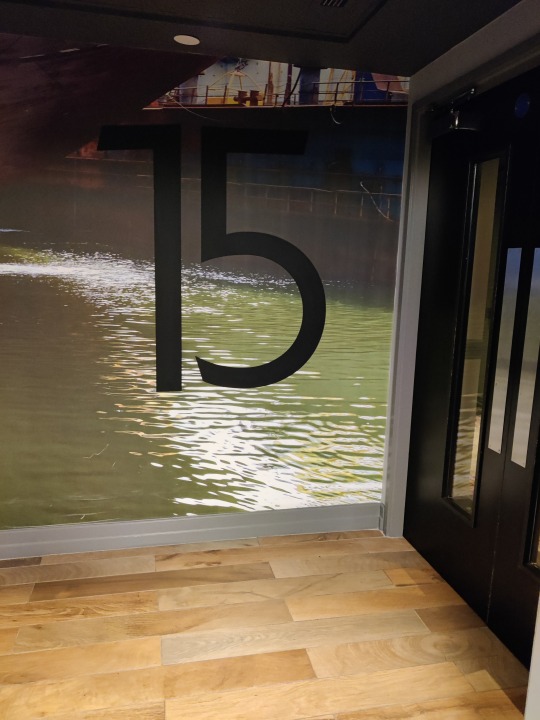
My room didn't have a bolt across the door. Just as well.

Pulp weren't playing until after 9pm but I thought it would be a good idea to go a bit early so whipped on my His n Hers t-shirt that nobody recognises as a His n Hers t-shirt. With the pang of double wines still fresh in my memory, I thought that I may as well get some value out of my ticket, and get there early enough. Paul Heaton of Housemartins and Beautiful South fame was playing at 4:30 so I thought that would be a good time to start.
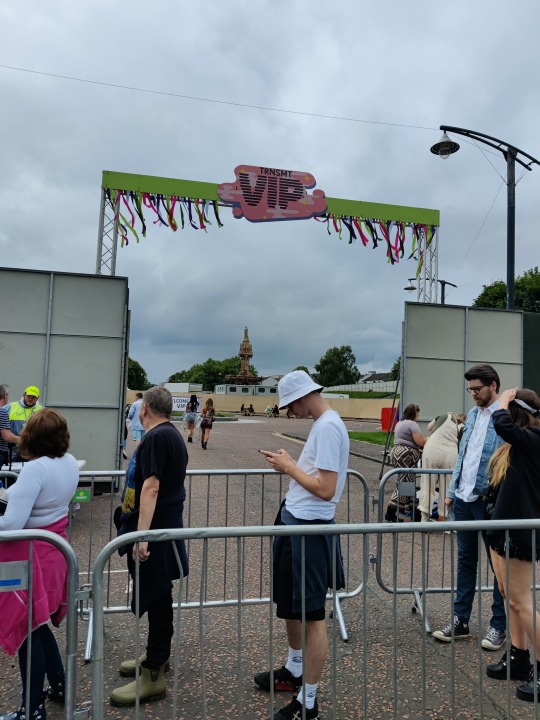
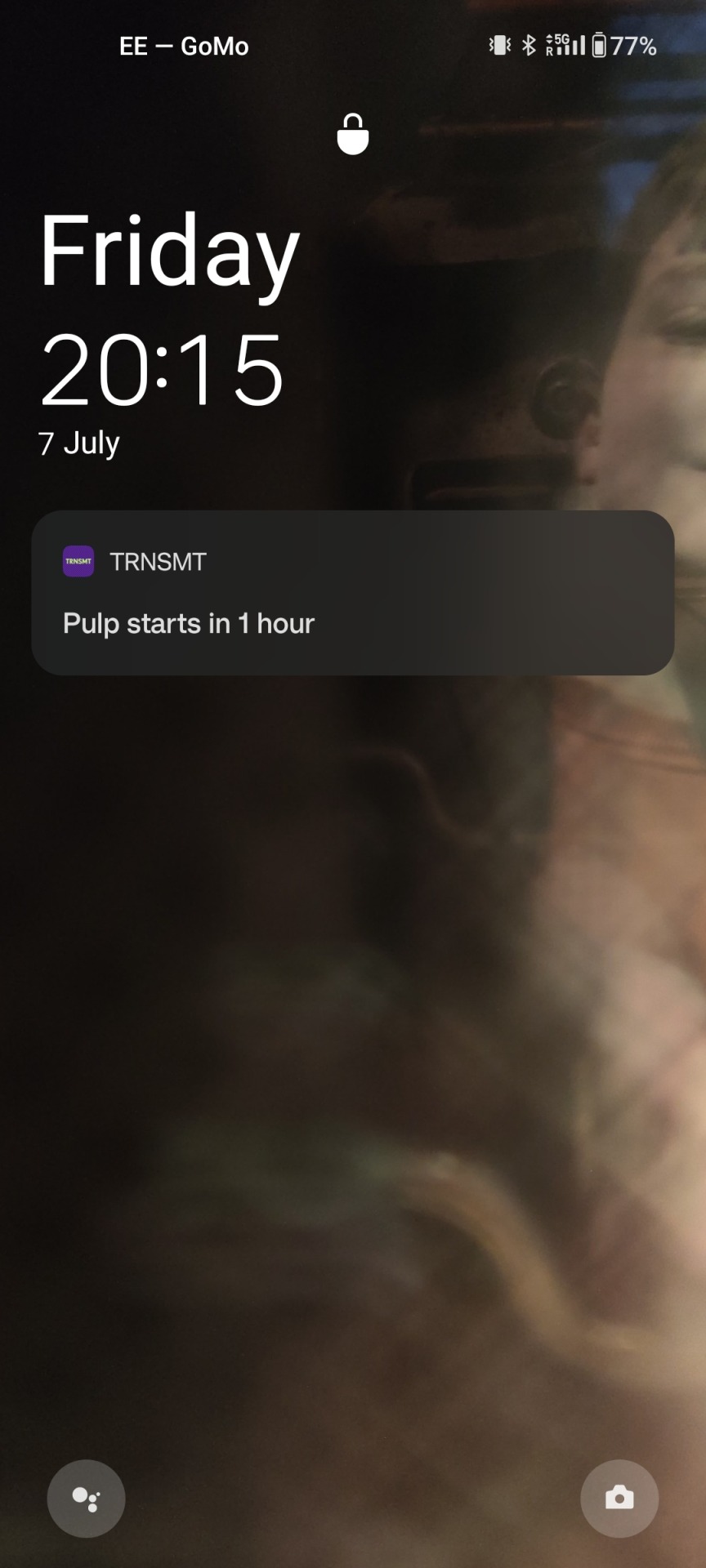
The strongest thing that passed my lips was Us+Them coffee and Scran's chicken shawarma. The woman at the box office strapped my silver grey band to my wrist and in I went.
My game plan was to ensure I got as close to the stage as possible for Pulp without having to stand through Niall Horan and George Ezra so I did my test run for Paul Heaton.
I really enjoyed his set and I knew quite a few of the songs. I ended up standing beside a guy with a Union Jack hat who booed Heaton when he sang "F**k the King" and revealed his co-singer's football team was Celtic. I had my line "I support Patrick Thistle" ready even though I haven't even looked at the Scottish League table since the 1990s. Heaton sang a good few Beautiful South and House Martin's songs. He ended with Caravan of Love, which was great.
As planned, I skipped Niall Horan completely in search of food but walked by the stage as he was covering a Tears for Fears song, which probably would have been tolerable had I have bothered standing in the pit. I watched a band on the King Tut stage, mainly a refuge for older people trying to drown out Horan but gave up after a few songs. I found myself some grub and someone smiled at and commented on my t-shirt (FINALLY!) To celebrate I grabbed my first beer and sat on a picnic table. I had a lovely chat with the people sitting there and before I knew it my phone binged a notification. One hour to go. Time for my masterplan.
I calculated that George Ezra fans would not be Pulp fans so I decided to hang out at the edge of the first few rows for the last 3 songs of his set. I knew two of the songs and it didn't make me like him any more or less than I had before. I possibly tapped my toe to the chorus of his last song, the one about yellow and green, which might be about one of the wires in a plug? Anyway, once he had cleared off, hordes of teenagers changed places with people my age. It seems I was not unique in my plan. I found myself squashed between two friends who were now in their 40s and a very young couple who seemed to like Pulp a lot. Although there were more very young people there than I'd have liked, I was happy enough with that. I chatted to a few of them who kept listing other bands they thought I might like.
One thing I remembered from Dublin was to keep an eye on the screens on the sides of the stage as the beginning of I Spy began.

And just like Dublin, up popped Jarvis...

It was as joyous as I don't remember the first time being. The setlist was pretty much the same (minus Razzamatazz) and it basically filled in the gaps of the forgotten evening. After I Spy, Disco 2000 got everyone going, partially because it was one of two songs that the young people knew.
I learned one of the women I met also had Something Changed as her wedding song. She cried all the way through it. I missed Rozz being there.
Another thing I noticed was that I was bopping a lot more than most of the people around me. I think that might have been the difference between the first gig and this one. There were a lot of people there that didn't know Pulp that well. I didn't care. I happily took on the "annoying old man trying to relive his youth" role.
There were too many highlights to mention. I videoed a little bit of "Mis-shapes" for Emrys because it's his favourite song. "Do you remember the first time?" took on its new meaning for me, and it was followed by Babies, which was just amazing. I was slightly relieved when Sunrise started because I thought I was going to faint from all my jumping. I imagine the people around me were too. I never realised what a brilliant song that was. Weeds and Pink Glove were also surprise highlights. "This is Hardcore" was stunningly good and also gave me a break from jumping but "Sorted for Es and Whizz" got me bouncing again. Nobody was chewing their inner mouth.
I'm not quite sure why but Jarvis sang Happy Birthday to Ringo Starr and threw chocolates at the crowd to celebrate World Chocolate Day. Even more puzzling, he read a poem.
I didn't recognise it. My guess is that he googled "very short Scottish poem" and that was it.
The encore was the same as Dublin. I was surprised by how many people knew Like a Friend. I didn't really know it that well. Maybe young people knew it from a film it was in? As the crowd got restless for Common People, I knew Underwear was coming first and I was possibly the most excited person in the crowd. Jarvis may have introduced it as foth-éadaí in Dublin but I don't remember. It didn't matter, it was perfect for the song everyone was waiting for. Like it or not, even if this was the only song most people were here for, there's nothing like standing with thousands of people belting it out. Jarvis teased the crowd asking had he left a song out and suggested "Pencil Skirt" before he gave everyone what they wanted. It was pure pure joy. Complete with fireworks, we chanted "I wanna live with Common People like you" over and over again, and I hoped we'd never stop. La la, la la la la la, oh you. The stage flashed. And then it was over.
I said my goodbyes to my new friends and off I walked to my hotel, back to the 15th floor, the music buzzing in my ears all night. I might not have remembered the first time, but I'll never forget the second.
0 notes